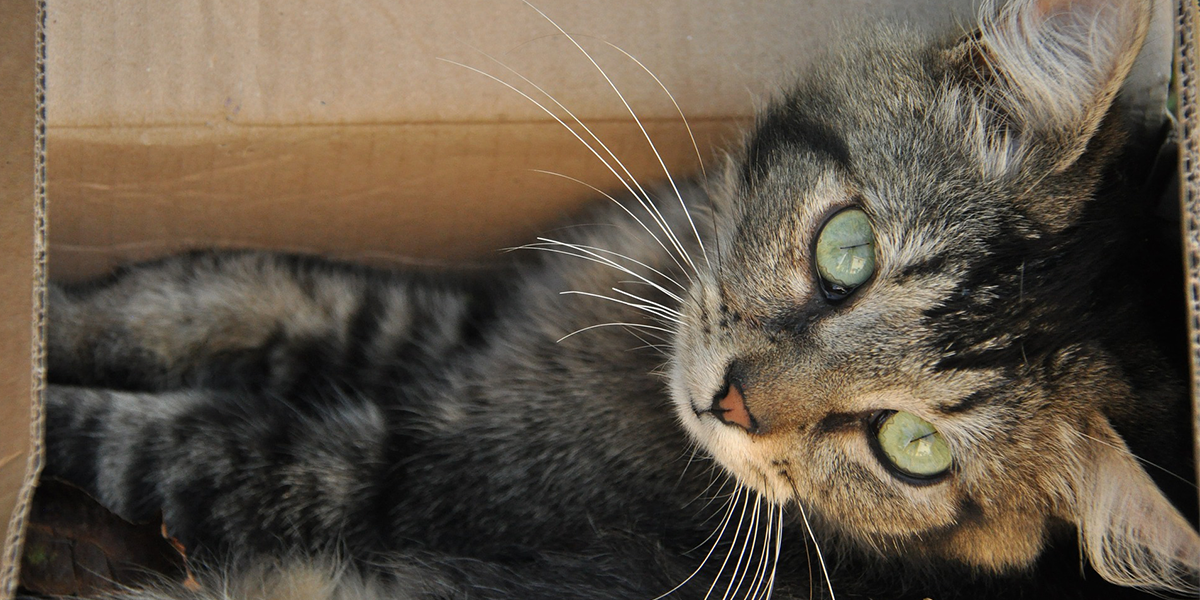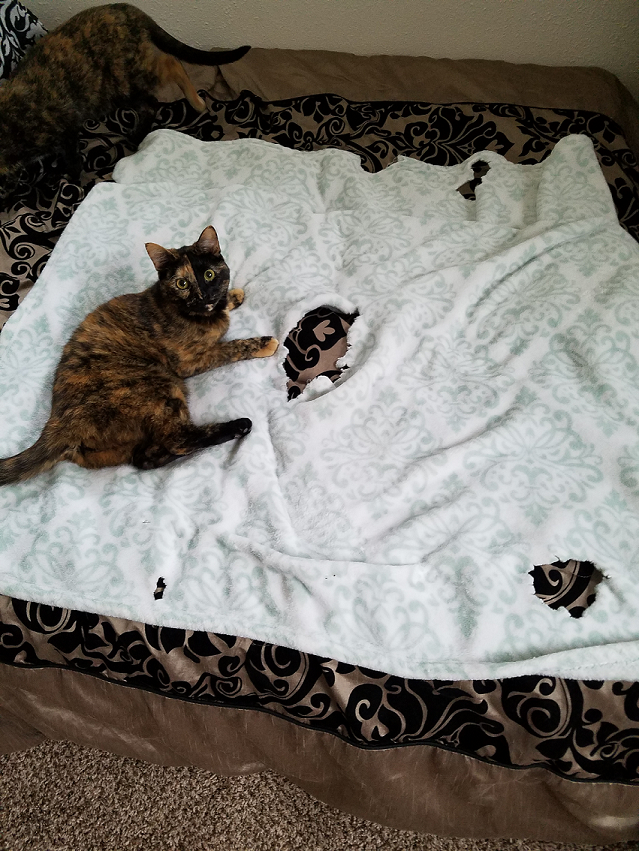pica in cats wood
Pica is the urge to eat non-food objects and is more common in cats than you would expect. Most commonly associated with wool-sucking a behavior where cats suck or chew on woolen cotton or synthetic material this compulsive disorder can progress to true pica where cats chew on and sometimes ingest anything from wood to litter to plastic grocery bags.

Pica In Cats International Cat Care
Pica was directed most commonly at shoelaces or threads followed by plastic fabric other items rubber paper or cardboard and wood.

. Dietary insufficiencies like lack of fiber vitamins or minerals. It is most frequently seen in certain breeds such as Siamese Burmese Tonkinese and other Oriental types leading to the suggestion that there may be a genetic component with the trait passing down particular family lines. Why pica can be dangerous.
The cause of pica is unknown but experts speculate that it could be due to a number of causes such as being weaned too young dietary deficiencies genetics. Up to 10 cash back Pica in cats refers to the ingestion of non-food items. Pica in cats is a potentially serious condition where they have an abnormal compulsion to eat non-food substances such as clothing plastic wood etc.
Young cats are more likely to suffer from pica syndrome. Certain breeds including Siamese and Birman cats are. Before a cat is diagnosed with pica it means the syndrome and behavior have been going on for a long time as cats tend to be very secretive.
Cats with Pica tend to be most interested in soft materials such as wool but have been known to eat materials such as plastic and even litter. Honestly it becomes a mission of hiding anything that could potentially be edible. What It Means if Cats Are Chewing on Wood Pica.
Hes eaten things like plastic bags bed sheets socks his toys even receipt paper. Treatment usually focuses on environmental. Pica in Cats.
Pica is relatively uncommon in cats. Pica may be genetic for some cats. Early weaning of kittens has been postulated to.
Genetic disposition or may. Pica is a surprisingly common type of eating disorder that causes pets to compulsively crave and eat non-food items and it can affect both dogs and cats. Oriental cat breeds such as the Siamese may be at a greater risk of pica.
Pets with pica develop an appetite for some pretty bizarre things including rocks dirt clothing cat litter plastic bags rubber bands hair ties even electrical cords and drywall. Pica in cats may involve kitties sucking wool stuffed animals or fleece as well as other non-food materials including litter soil yarn strings paper including toilet paper wood dirt cardboard blankets socks jackets plastic shoelaces. Often the molar teeth are used to chew holes in such materials.
Its most common in certain breeds such as Siamese Burmese Tonkinese and other Oriental types which suggests there may be a genetic component with the trait passing down family lines but other domestic cats with no known Oriental ancestry can also suffer from pica. Well with Beau it was obvious almost the second we got him. Some cats will eat their cat litter if theyre anemic Plotnick says.
Here are the common causes of pica in cats. If your cat eats wood and other inedibles pica is the likely cause. Beau mostly eats things when he is bored or when we are away from him.
Feline diseases like hyperthyroidism diabetes brain tumor and leukemia. Bradshaw and others broadened the definition of pica in cats to include chewing andor sucking of non-nutritive items 1. Cats with pica may chew on or eat wood fabrics blankets or other objects.
Treatment for Pica in Cats. Ive had two cases of cats. Pica is a term used to describe the consumption of non-edible materials.
A significant positive association was found between sucking and ingesting fabric P. The disorder isnt well understood yet but it could be related to a number of issues including stress and medical issues like pancreatitis and constipation. It is known that cats target a range of items including fabrics made of wool cotton or synthetic materials shoelaces rubber plastics paper cardboard wood and metals 1 2 3.
Pica is difficult to diagnose in cats because some chewing and sucking behavior is normal. Pica is a human and animal disorder characterized by eating things that are typically considered as non-food or do not have any nutritive value. Pica is a term used to describe the consumption of non-edible materials.
Frequently reported items which cats may chew include wool fabric wood plastic paper and plants Case 2003 Horwitz Mills 2009. Pica in cats is likely to begin in the first year of life. Kitties can suffer burns or can be electrocuted from chewing wires.
Cat pica is also associated with feline leukemia and feline immunodeficiency virus and it. If you can bring along any notes of how the behavior looks on a daily basis what your kitty is seeking out to eat and when the behavior started. It might seem like a silly quirk or an annoying habit but cats who eat plastic are exhibiting a dangerous behavioral urge called pica and the consequences associated with it can be life-threatening.
In cats these items most often include fabrics elastics such as hair binders cardboard paper and plastic. A cat suffering from pica syndrome will go to all lengths to find and chew its favorite material. Pica is the term used when cats eat non-food items.
Pica can become a danger to your cats health because it can cause blockages in their intestinal tract. Cats who obsessively lick nibble andor consume items are exhibiting a form of pica. Ingested plastic can become lodged in the intestine requiring emergency surgery.
A behavioral disorder like stress anxiety or boredom. Approximately 25 of cats in the United States have pica syndrome. Cat pica may be caused by many things including.
Pica is the behavioral urge to eat nonedible materials. Cats with pica eat things they shouldnt. As pica can sometimes be a symptom of other medical conditions your first step should be to visit your vet to get a proper diagnosis.
The biggest concern with pica is a gastrointestinal obstruction. But we found that keeping him busy is usually a step in the right direction. How can I tell my cat has Pica.
Some cats ingested specific items but only chewed others. Pica involves ingestion of non-food items. Below well touch on some common causes of pica in cats.

Cat Kittens Mask Cats And Kittens Jo Brand Animal Room Cat Furniture Diy Cat Room

Cat Cheese Board Urban Outfitters White Elephant Gifts Cat Decor Elephant Gifts

Pin By Maria Jose Fernandez On Raining Catz N Dogz Kittens Cutest Beautiful Cats Cats

You May Have Noticed That Your Cat Is Starting To Eat Houseplants Things Made Of Wool Paper Rubber Bands Or Even Pla Baby Cats Kittens Cutest Funny Animals

Cat Bed From Wood Cat House From Wood Cama De Gato Casita Para Gatos Casa Del Gato

Look How High I Can Jump Video Cats Cute

Rob Van Doesburg On Twitter Crazy Cats Cute Cats Photos Cats And Kittens

What Is Pica Syndrome In Cats Petcetera Animal Clinic

6dd6785d019043b4c188bf353b5088dc Cat Diy Cat Care Cat Playground

Animal Fact Cats Have Less Taste Buds Than Humans And They Cannot Taste Sweets Animal Facts Cats Pets

Going As Lady Gaga Cute Cats Crazy Cats Cats

Cat By Debra Raskin Cats Gorgeous Cats Crazy Cats

Just Chilling Under The Stool Meow Moe Fancy Cats Cat Vs Cat Beautiful Cats

Modern Cat Furniture Featuring Large Condo For The Biggest Of The Cats Cat Lounge Cat Condo Cat Tree Condo




